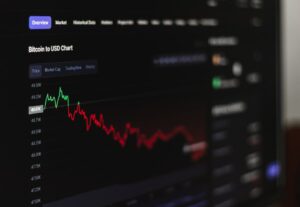Expert Insights: The Pros and Cons of Using Robots for Forex Trading
Forex trading has gained immense popularity in recent years, attracting both novice and experienced traders. With the advancement of technology, traders now have access to various tools and software that can automate their trading strategies. One such tool is the forex trading robot, also known as an expert advisor (EA). These robots are designed to analyze market trends, execute trades, and manage risk without the need for human intervention. While they offer numerous benefits, it is essential to understand the pros and cons of using robots for forex trading.
Pros of Using Robots for Forex Trading:
1. Emotionless Trading: One of the significant advantages of using a forex trading robot is that it eliminates the impact of emotions on trading decisions. Emotions like fear, greed, and overconfidence often cloud judgment, leading to irrational trading choices. Robots, on the other hand, strictly follow pre-programmed rules without any emotional bias, ensuring disciplined and consistent trading.
2. Enhanced Speed and Efficiency: Forex markets operate 24 hours a day, five days a week. Human traders may find it challenging to keep up with the fast-paced nature of the market. However, robots can analyze multiple currency pairs simultaneously, identify trading opportunities, and execute trades within milliseconds. This speed and efficiency can help traders capitalize on profitable opportunities that may otherwise be missed.
3. Backtesting and Optimization: Before deploying a forex trading strategy, it is crucial to test its effectiveness. Robots allow traders to backtest their strategies using historical market data, enabling them to evaluate the strategy’s performance over time. Additionally, robots can be optimized to maximize profitability by adjusting parameters based on historical data, ensuring the strategy’s adaptability to changing market conditions.
4. Elimination of Human Error: Even experienced traders are prone to making mistakes. Entering incorrect trade sizes, placing trades at the wrong time, or forgetting to set stop-loss orders can be costly. Forex robots eliminate human error by executing trades according to predefined rules, reducing the risk of costly mistakes and enhancing overall accuracy.
Cons of Using Robots for Forex Trading:
1. Lack of Adaptability: Forex markets are dynamic and subject to frequent fluctuations. While robots can adapt to certain market conditions, they may struggle to adjust to fundamental changes or unexpected events. A lack of adaptability can result in significant losses if the robot fails to respond appropriately to changing market dynamics.
2. Over-Optimization: Although optimization is a valuable feature of forex robots, there is a risk of over-optimization. Over-optimization occurs when a robot is excessively adjusted to fit historical data, resulting in a strategy that may not perform well in live trading. It is essential to strike a balance between optimizing a strategy and ensuring its robustness in real-time conditions.
3. Dependency on Technology: While technology has significantly evolved, it is not infallible. Relying solely on robots for forex trading means being at the mercy of technical glitches, internet connectivity issues, or power outages. Such disruptions can lead to missed trades, incorrect order placements, or even complete system failures. Traders must have contingency plans in place to mitigate these risks.
4. Lack of Intuition and Discretion: Forex trading requires judgment and intuition, especially when encountering unpredictable market conditions. Robots lack the ability to interpret news events, assess macroeconomic factors, or factor in geopolitical risks. Human traders can exercise discretion and make informed decisions based on their understanding of the market. Robots, however, solely rely on pre-programmed rules and algorithms.
In conclusion, forex trading robots offer several advantages, including emotionless trading, enhanced speed and efficiency, and the ability to backtest and optimize strategies. However, they also come with drawbacks such as a lack of adaptability, over-optimization, dependency on technology, and a lack of intuition and discretion. Traders need to carefully weigh these pros and cons and determine whether using robots aligns with their trading goals and style. Ultimately, a balanced approach that combines the strengths of both robots and human intelligence may be the most effective strategy for successful forex trading.






